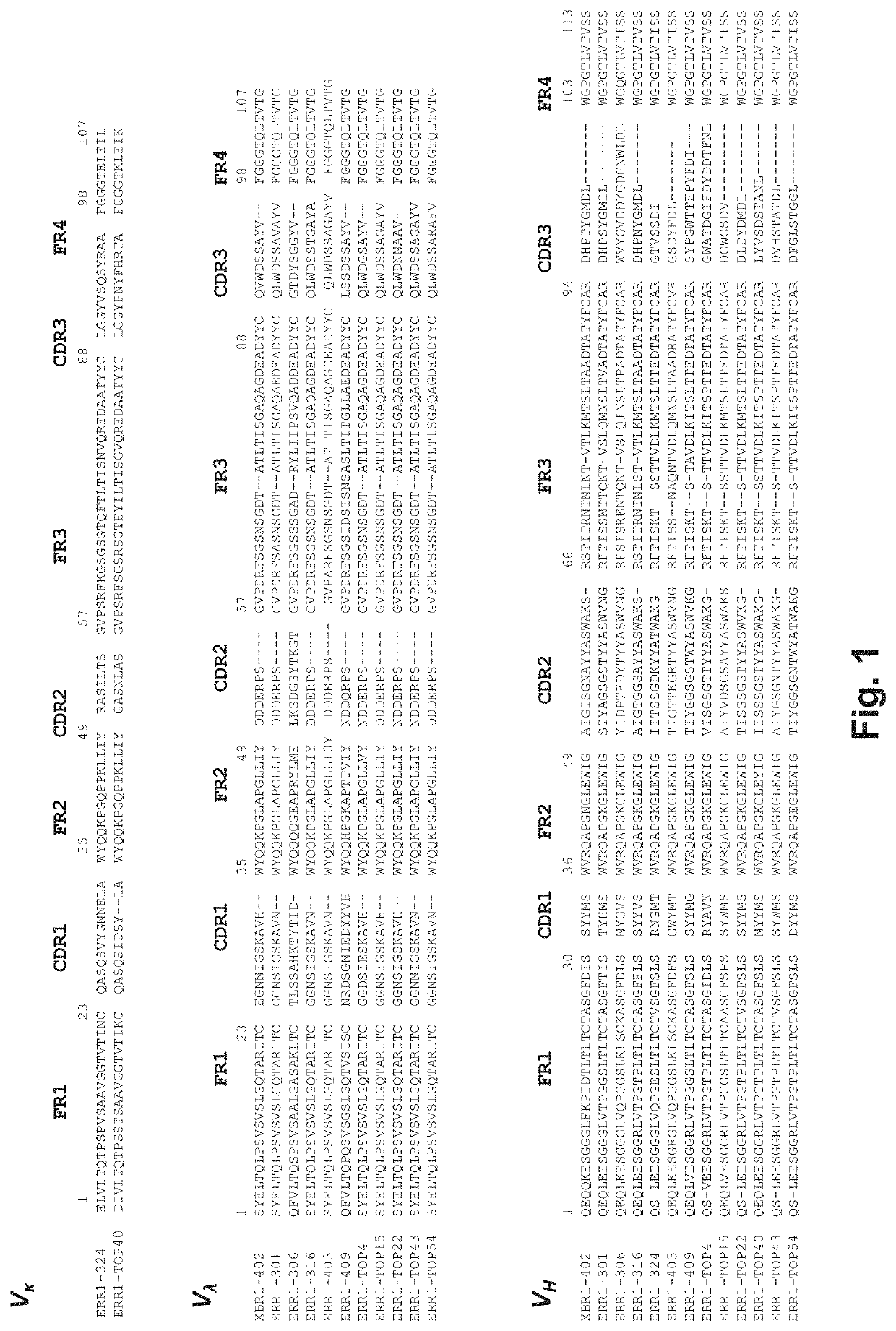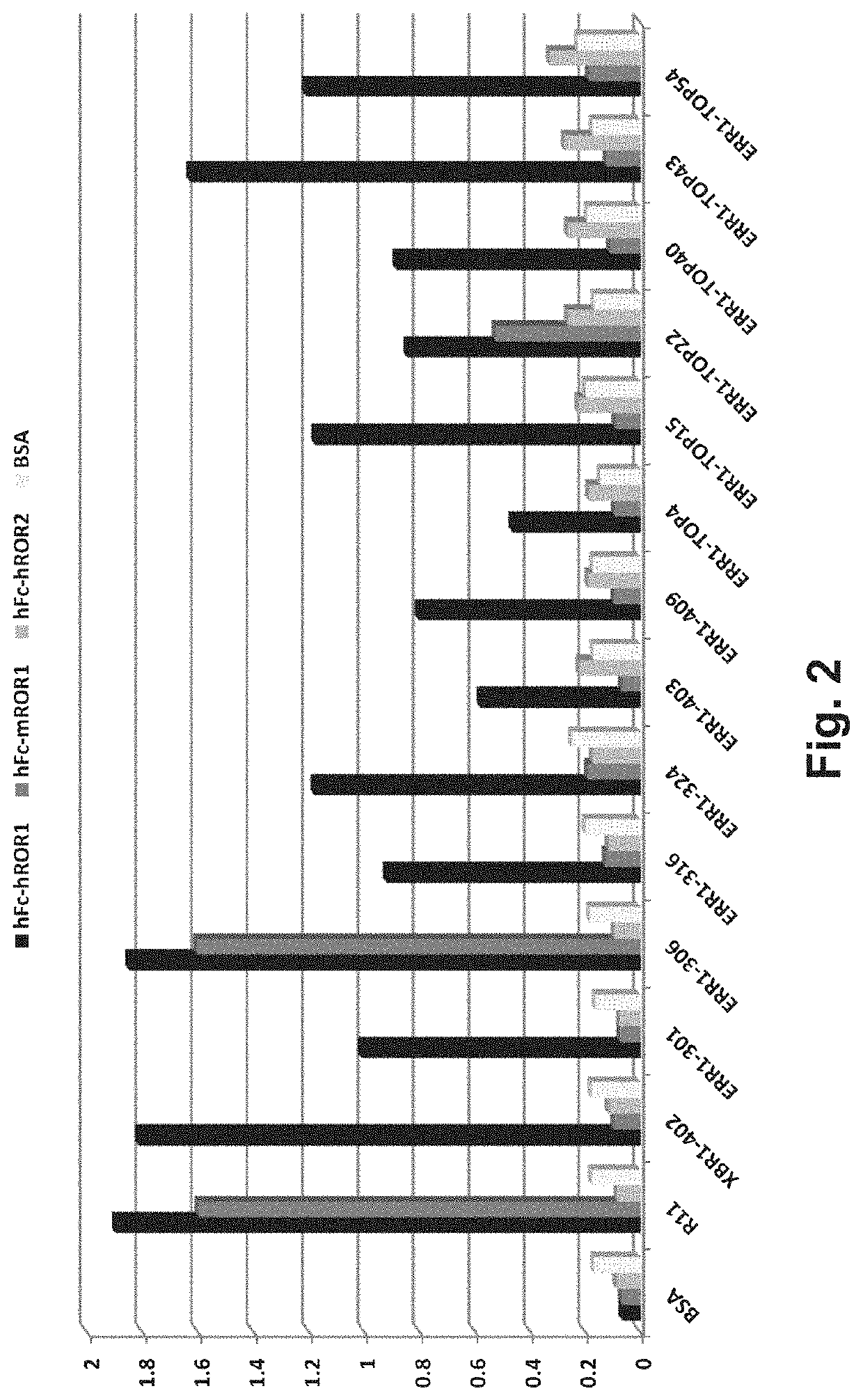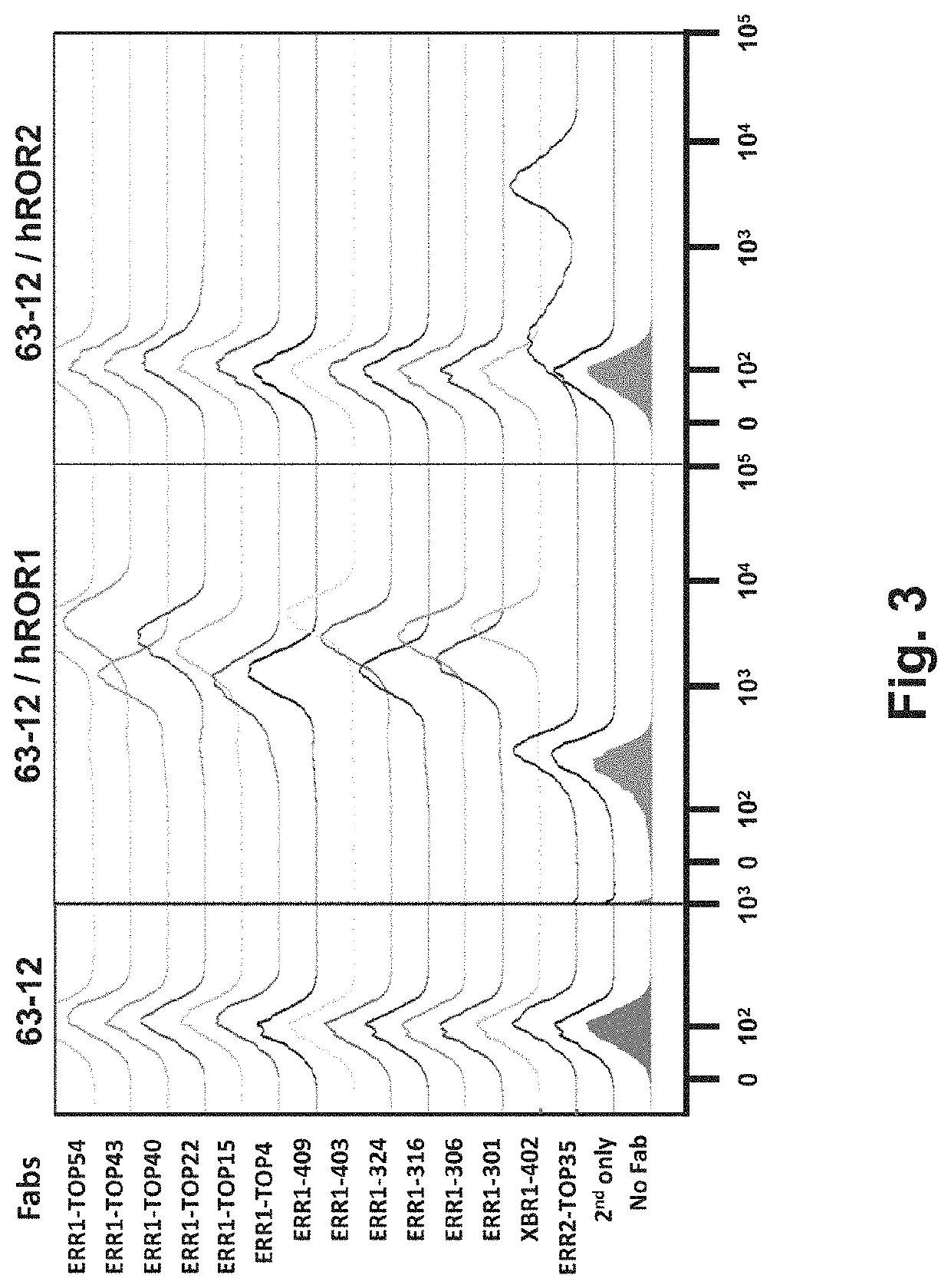Multispecific antibody product that binds to different ror1 epitopes
a technology of ror1 and antibody product, applied in the field of multispecific antibody product, can solve the problems of antibody drug conjugates (adcs) that encompass anti-ror1 antibodies and show only limited efficacy
- Summary
- Abstract
- Description
- Claims
- Application Information
AI Technical Summary
Benefits of technology
Problems solved by technology
Method used
Image
Examples
example 1
ment of 63-12 Cells Stably Expressing hROR1 or hROR2
[0186]The mouse Abelson murine pre-B cell line 63-12 (Shinkai et al. (1992) Cell 68:855-67) was cultured in culture media (17.7 g / L Gibco® IMDM (Life Technologies, 42200-030), 3.024 g / L NaHCO3(Sigma-Aldrich, p.a., >99.7%), 10 mL / L 100× non-essential amino acids (Life Technologies, 11140035), 5 mg / L insulin (Sigma-Aldrich, 1-5500), 3 mL / L of 10% primatone RL / UF in H2O (Sheffield Bioscience), and 1 mL / L of 50 mM 2-mercaptoethanol (Sigma-Aldrich, M-3148) in H2O), supplemented with 2% (v / v) FCS, 100 IU / mL Pen / Strep / Fungizone (Amimed, 4-02F00-H), 200 mM L-glutamine (Amimed, 5-10K00-H) and 50 μM 2-mercaptoethanol (Amresco, 0482) at 37° C. and 7.5% CO2.
[0187]Cells were engineered to overexpress hROR1 and hROR2 by transposition as follows: cells were centrifuged (6 min, 1200 rpm, 4° C.) and resuspended in RPMI-1640 media (5×106 cells / mL). 400 μL of cell suspension was then added to 400 μL of RPMI containing 10 μg of transposable vector pPB...
example 2
n of High-Complexity Rabbit Fab Library and Reagents for Screening
[0191]Construction, expression, and purification of recombinant human ROR1 proteins: Construction, expression, purification and biotinylation of hFc fusion proteins containing different domains of human ROR1 or mouse ROR1 were described (Yang et al., PloS One 6:e21018, 2011). For hROR1-AVI-6×HIS fusion protein, the extracellular domain of human ROR1 (24-403) was PCR amplified with primers pCEP4-hROR1-F and pCEP4-hROR1-Avi tag-R (note that the AVI tag was introduced to the C terminus of ROR1 by primer pCEP4-hROR1-Avi tag-R), followed by extension PCR with primers pCEP4-signal-F-KpnI and pCEP4-6HIS-R-XhoI to add a signal peptide and 6×HIS tag to the N and C terminus separately before cloning into pCEP4 via KpnI / XhoI. This construct was then transiently transfected into HEK 293F cells (Invitrogen) using 293fectin (Invitrogen), and the protein was purified by Immobilized Metal Ion Affinity Chromatography using a 1-mL HisT...
example 3
n and Purification of Chimeric Rabbit / Human Fab and Full-Length IgG1 Antibodies
[0196]Construction, expression, and purification of chimeric rabbit / human Fab and IgG1: MAb XBR1-402 in chimeric rabbit / human Fab format was cloned into E. coli expression plasmid pC3C-His and expressed and purified as described in Kwong and Rader, Curr Protoc Protein Sci Chapter 6:Unit 6 10, 2009. For the expression of mAb XBR1-402 in chimeric rabbit / human IgG1 format, the previously described vector PIGG-R11 was used (Yang et al., PloS One 6:e21018, 2011). The VH encoding sequence of Fab XBR1-402 was PCR amplified using primers XBR1-402_VH_F and XBR1-402_VH_R, and cloned via ApaI / SacI into PIGG-R11. Then the light chain encoding sequence of XBR1-402 was PCR amplified using primers XBR1-402_λ_F and LEAD-B, and cloned via HindIII / XbaI into PIGG-R11 with the corresponding heavy chain encoding sequence. Note that an internal ApaI site in FR4 of VH encoding sequences of Fab XBR1-402 was removed by silent mut...
PUM
| Property | Measurement | Unit |
|---|---|---|
| Molar density | aaaaa | aaaaa |
| Molar density | aaaaa | aaaaa |
| Molar density | aaaaa | aaaaa |
Abstract
Description
Claims
Application Information
 Login to View More
Login to View More - R&D
- Intellectual Property
- Life Sciences
- Materials
- Tech Scout
- Unparalleled Data Quality
- Higher Quality Content
- 60% Fewer Hallucinations
Browse by: Latest US Patents, China's latest patents, Technical Efficacy Thesaurus, Application Domain, Technology Topic, Popular Technical Reports.
© 2025 PatSnap. All rights reserved.Legal|Privacy policy|Modern Slavery Act Transparency Statement|Sitemap|About US| Contact US: help@patsnap.com



